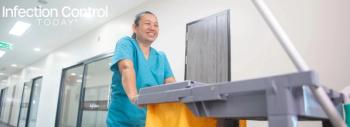
New AAMI Publication Helps Facilities Prepare SPDs for Accreditation Surveys
A new publication from the Association for the Advancement of Medical Instrumentation (AAMI) , "Sterile Processing in Healthcare Facilities: Preparing for Accreditation Surveys," will be available in mid-October.
The purpose of this guidance document is to help healthcare professionals prepare for an accrediting agency survey as it relates to the sterile processing of surgical instruments and other medical devices in healthcare settings. Accreditation agencies include the Joint Commission (TJC), the Centers for Medicare & Medicaid Services (CMS), the American Association for Accreditation for Ambulatory Surgery Facilities (AAAASF), the Accreditation Association of Ambulatory Healthcare (AAAHC), the Accreditation Commission for Health Care (ACHC), the American Osteopathic Association/Healthcare Facilities Accreditation Program (AOA/HFAP), the Community Health Accreditation Program (CHAP), DNV Healthcare (DNV), and state departments of health.
The accreditation process is designed to help healthcare facilities take a systems approach to evaluating their care processes and improving those processes for the betterment of patient care and safety. Each accreditation organization has accreditation standards and supporting documents that healthcare facilities can review before a survey. In general, the resources provided by accreditation organizations include all standards related to the healthcare facility as a whole. Sterile processing in healthcare facilities: Preparing for accreditation surveys summarizes the standards and related documents related to the reprocessing of reusable medical devices.
This document contains valuable tools for preparing for accreditation surveys and maintaining compliance with accreditation requirements as they relate to sterile processing. These tools include information on accreditation organizations and requirements, information on relevant evidence-based guidelines published by professional organizations, a step-by-step guide to preparation for a survey, guidelines on risk reduction, and an example of a sterile processing auditing tool.
The publication will be available for purchase on the AAMI website at
Newsletter
Stay prepared and protected with Infection Control Today's newsletter, delivering essential updates, best practices, and expert insights for infection preventionists.






